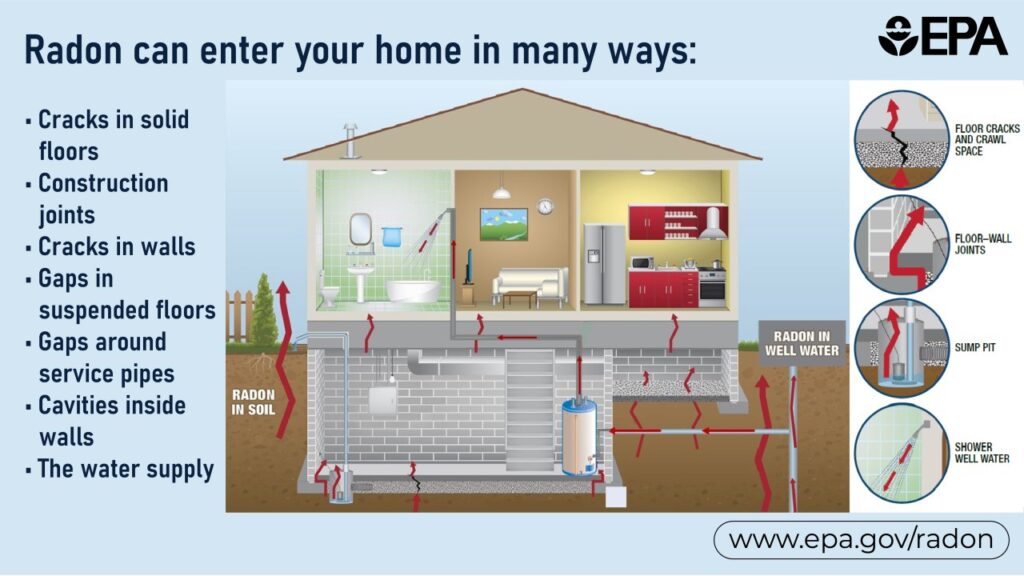You can’t see it, smell it or taste it, but if you live in Wyoming, there’s a good chance you’ve had some exposure to radon.
Radon is a radioactive gas that can seep into your home. It is the leading cause of lung cancer among non-smokers, the second leading cause of lung cancer overall, and can have an impact on your and your family’s health.
Radon is present in soil and can enter your home in a number of ways. Common entry points include via; cracks in floors and crawl spaces; construction joints; cracks in walls; gaps between the ground and higher floors; gaps around service pipes; cavities inside walls; and through the water supply.
Radon is more prevalent in some areas of the United States than other. Unfortunately, Wyoming is in the Environmental Protection Agency’s (EPA) Zone 1, meaning average indoor radon levels have the highest potential for being greater than 4 picocuries per liter (pCi/L). Why is that number significant? Anything over 4 pCi/L is deemed hazardous to health. The good news is that there are many ways to address high radon levels in your home, including:
- Use an at-home test to check levels –Wyoming residents can get a free at-home test by visiting https://states.aelabs.com/#/wy At-home tests can also be found at many big box stores as well as hardware and home improvement stores. They are easy to use and results come back in a timely manner.
- Seal cracks in floors and walls with plaster, caulk or other appropriate materials
- Contact a licensed radon mitigation specialist to help you determine the best way to lower your indoor radon levels
Radon can have a huge impact on your and your family’s health, but you can’t tell if it’s present without testing. Winter is the best time to conduct a test and make a plan to keep radon out of your home. For more information, please contact Cheyenne Laramie County Public Health at 307-633-4000 or visit our website at clcpublichealth.org
